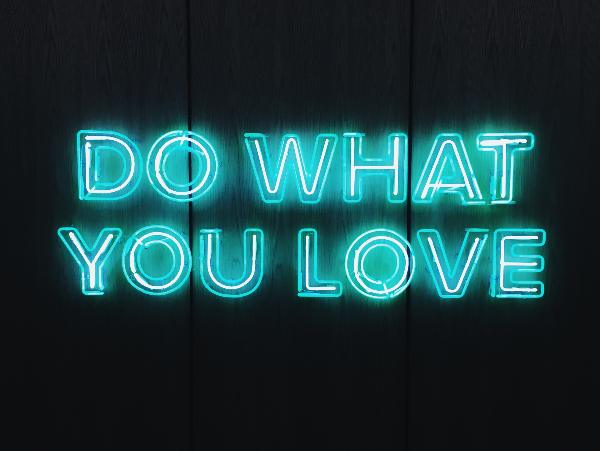Have you ever felt like you’re floundering day after day unable to focus, constantly forgetting important tasks or appointments no matter how hard you try to keep up? Do you make careless mistakes over and over or feel perpetually overwhelmed trying to keep your life organized? And do you then harshly criticize yourself as flaky, stupid or lazy despite knowing deep down you have intelligence and drive?
What if your struggles don’t stem from ignorance, indifference or lack of capability, but an undiagnosed neurodevelopmental disorder instead? Maybe that disorder even has a commonly recognized acronym yet rarely gets addressed seriously beyond childhood: ADHD.
Attention deficit hyperactivity disorder doesn’t disappear after adolescence just because the textbook symptoms might transform or mask themselves. ADHD frequently endures as an invisible but very real condition keeping adults from reaching their potential in ways small and profoundly life-altering.
Prevalence of ADHD in adults
adhd symptoms in adult prevalance
shoulds defitnition
Shoulds meaning
How many adults cope with undiagnosed ADHD? Current research continues working to pinpoint exact estimates, but data already demonstrates ADHD as a highly prevalent issue across adulthood distinct from childhood rates.
Longitudinal studies tracking children with ADHD over decades find at least 50% continue battling symptoms as adults. In contrast though, most adults diagnosed do not report childhood ADHD – suggesting onset much later in life.
Newer research shows around 8 million U.S. adults exhibit significant ADHD symptoms with impairment but lack diagnosis and care. Evidence also indicates only 1 in 6 adults displaying clear ADHD symptoms get properly evaluated and treated. Yet treating ADHD, even when identified first in adulthood, leads to major improvements to wellbeing and functioning.
Clearly, improved awareness that ADHD persists as a legitimate issue across adulthood remains sorely lacking. Quality screening tools and diagnostic processes for adults continue improving but still prove unavailable to millions struggling from undertreated or undiagnosed ADHD.

Undiagnosed ADHD in Adult Women
While ADHD gets recognized as fairly common in boys and men, it often goes overlooked in girls and women. The vast majority of women with ADHD struggle for years without answers, effective treatment or support.
Recent research found that a large number of adult women exhibit symptoms of ADHD, but never receive an official diagnosis. A major review of multiple studies estimated that almost 13% of adult women have significant ADHD symptoms, but do not have a formal diagnosis on record.
This gap highlights a worrying trend where too many women struggling with ADHD are slipping under the radar. Without a diagnosis, these women lack access to treatment and support.
The review also found that women with ADHD had twice the prevalence of substance abuse, current smoking, depressive disorders, severe poverty, and childhood physical abuse, as well as triple the prevalence of other conditions such as insomnia, chronic pain, and suicidal ideation compared to women without ADHD. More awareness, screening and diagnosis is critical to support women with ADHD.
How Women’s Symptoms Differ
Girls with ADHD tend to act less disruptively and show fewer externalizing behaviors than boys. Instead of causing trouble, they may become withdrawn daydreamers struggling academically. Girls also exhibit less impulsivity and hyperactivity outwardly. Without recognizing subtler presentations, many girls get missed.
Additionally, women more frequently exhibit predominantly inattentive ADHD. Their symptoms mainly include disorganization, forgetfulness, poor time management and difficulty sustaining focus. These challenges cause private impairments to work, relationships, finances and household duties rather than behavioral issues drawing reprimand.
How Do Symptoms Differ in Adults?
should cognitive distortion
The hallmark symptoms of ADHD involve inattention, hyperactivity and impulsivity. But within those categories, specific ADHD symptoms can vary tremendously between children and adults.
For example, while young kids may show ceaseless energy running or shouting at inappropriate times, hyperactivity evolves as one matures. Adolescents and adults tend to experience restlessness or frequently fidget. Or they may report racing thoughts that disrupt focus. Impulsivity also transforms – instead of blurting things out, adults may make hasty decisions with money, jobs or relationships without considering consequences.
In kids, inattention manifests as daydreaming and distraction during structured activities like classroom lessons. Adults with ADHD struggle more with sustaining attention for mundane, boring tasks at jobs even if intellectually stimulating. Kids forget their toys outside; adults constantly misplace essential items like cell phones or documents for work. Rather than ignoring homework, adults chronically procrastinate on managing their homes, finances and important life admin.
These differences highlight why screenings and symptom checklists developed for children fail to identify many adults with ADHD. Without understanding how ADHD evolves over time, adults lack explanations for long-unresolved struggles.
Common ADHD Symptoms in Adults
Attention deficit hyperactivity disorder (ADHD) often persists from childhood into adulthood. The symptoms and struggles can look different in adults compared to children. Here are some common adult ADHD symptoms along with relatable examples.
Inattentiveness
Adults with ADHD often have trouble sustaining focus, especially on boring tasks. For example, you might struggle to concentrate during long meetings at work, or find your mind wandering within minutes of reading a book. Staying on top of tasks can be difficult too. You may frequently miss deadlines, forget about plans with friends, or ignore household chores. Disorganization is another common symptom. You might constantly be searching for commonly misplaced items like keys or cell phones and struggle with clutter.

Hyperactivity
While hyperactivity tends to decrease with age, some symptoms stick around. Fidgeting and restlessness are common. You may tap your pen, shake your leg, or frequently readjust in your seat. Or you might find it unbearable to sit through a 3-hour lecture or meeting. Impatience and impulsiveness can manifest too. For example, you might blurt things out during conversations without thinking first. Making impulsive decisions with money is also common, like excessive shopping splurges when you probably can’t afford it.

Impulsivity
Impulsiveness in adults with ADHD can lead to impatience, trouble taking turns, and frequent interruption of others during conversation. It can also mean making quick decisions without properly considering the consequences, such as pursuing a new career path on a whim even if you aren’t fully qualified. Impulsiveness can also strain relationships. Partners may become frustrated with the ADHD adult’s selfish or insensitive behavior. These relationship problems often leave the ADHD adult feeling rejected.
Other Challenges
Adults with ADHD may underperform at school or jobs compared to their actual competence or intelligence levels. Low self-esteem is common too. Anxiety, depression, chronic stress, and sleep disorders often accompany adult ADHD as well. Impulsive behavior and emotional regulation challenges also contribute to a higher likelihood of addictions and substance abuse in adults with ADHD.
If you're struggling with the burden of "shoulds"...
Schedule a consultation with our vetted therapists.
- Limited weekday evenings available right now for DC, NY & NJ
- FREE 15 minute consultation
- In-depth therapy that addresses more than just symptoms
- Trained in Evidence-Based Practices
But What About the Lesser-Known ADHD Symptoms?
If you’ve researched attention deficit hyperactivity disorder (ADHD), you’ve likely read about the common symptoms like inattentiveness, hyperactivity and impulsivity. Those key signs are officially listed in the Diagnostic and Statistical Manual (DSM). But what about the ADHD symptoms you experience that aren’t defined in the DSM?
ADHD can manifest in subtle, unofficial ways that deeply impact adults. You may identify with many unofficial ADHD symptoms that aren’t discussed nearly enough. Understanding these less obvious, overlooked challenges is key to figuring out if you have ADHD as an adult and getting the proper treatment.

Executive Functioning Struggles
You know you possess intelligence and competence, but you just can’t seem to demonstrate it. Everyday tasks like cleaning, organizing paperwork, managing your budget – they incite deep feelings of frustration and inadequacy. You might write reminders but forget to look at them later. Or you stock your fridge with healthy ingredients but end up ordering takeout because you can’t motivate yourself to cook.
These difficulties stem from impaired executive functioning – a set of mental processes that help you manage daily responsibilities. Parts of your brain may fail to properly activate and coordinate when attempting certain tasks. This makes juggling things like time management, sustained focus, organization extremely taxing for you no matter how hard you try.

Overwhelm in Social Settings
For many adults with ADHD, social gatherings become overwhelming quickly. Conversations might lag because you have trouble focusing amidst so much stimulation and background chaos. The many subtle social rules baffle you too. You may often unintentionally interrupt people or forget to ask questions about their lives. Though you crave meaningful connection, you leave each event feeling awkward and exhausted.
Sensory Overload
On some days, you notice sounds, lighting, scents, and other stimuli around you much more acutely. The humming refrigerator that you normally tune out jolts you with aggravation. The brightness of fluorescent office lights gives you a headache. The rubbing of a clothing tag against your neck annoys you to the point of distraction. Everyday sensations become almost unbearable.
When you’re experiencing sensory overload, you may react more emotionally and impulsively. You quickly feel bombarded, irritated, drained. Until the tidal wave of stimuli dies down, you can’t focus properly or think rationally. This unpredictable hypersensitivity stems from the ADHD brain’s inability to filter stimuli appropriately.
Rejection Sensitivity
You might notice strong emotional reactions to perceived rejection from friends, partners, coworkers – even strangers. An unanswered text message leaves you reeling with hurt for hours. Being left out of event invites makes your week feel ruined with loneliness and shame. Offhand comments stick in your mind, replay endlessly.
This extreme sensitivity to disapproval or exclusion often relates to the ADHD brain’s dopamine deficiency. You end up somewhat addicted to that validation “high”. When rejection threatens your sense of belonging, it feels devastating. Frequent rejection sensitivity causes relationship loss and low self-esteem over time too.
Mismanaged Anger
Most adults with ADHD struggle significantly with emotional control, especially containing anger appropriately. When you feel overwhelmed with stimuli or situations, anger often surfaces rapidly as your “fight or flight” response activates. Outbursts might be frequent and intense over seemingly small triggers like being stuck in traffic or arguing with your partner.
Once the fiery anger fades after an outburst, the intense shame, regret and confusion set in. Your explosions likely exaggerate conflict and push loved ones away. This key piece of emotional dysregulation with ADHD often goes unaddressed.
Time Blindness
You chronically underestimate the proper amount of time needed to complete tasks and consistently arrive late to almost everything. Appointment start times mean nothing to you – even really vital ones relating to your career or education. You might leave just 5 minutes to travel somewhere that logically takes 15 without traffic. For you, the concept of time and just how quickly (or slowly) it passes remains nebulous. You never quite know just how long something will or should take.
This time blindness relates closely to executive functioning deficits with ADHD. Your brain struggles significantly with perceiving time as well as planning and prioritizing tasks within proper time frames. Always running late constantly stresses your relationships and productivity.
Memory Issues
You walk into rooms and completely blank on why you’re there in the first place – frequently. Names and faces hardly stick in your mind, even with repeat encounters. You somehow forget appointments and obligations that were long scheduled with reminders set. You misplace items constantly around your home. Key memories – beautiful vacations, weddings, graduations – feel somewhat blurred and incomplete later.
ADHD commonly causes working memory deficits that impair quick recall accuracy about recent occurrences or memorized information. Your memories end up scattered, disjointed and frustratingly elusive. This significantly inflames challenges at work, school and in daily habits.
Sleep Disturbances
You slog through daily life feeling chronically sleep deprived. Actually falling asleep at bedtime parades as an impossible feat most nights – even exhausted. Or you fall asleep fine but wake frequently and struggle to return to sleep. Early morning waking with an active mind becomes routine. Insomnia or highly restless sleep leave you feeling wired and drowsy simultaneously as you try to take on life’s demands.
The ADHD brain’s dopamine deficiency and overactivity wreak havoc with natural sleep cycles. Further contributing to sleep loss, many adults with ADHD also battle anxiety, chronic stress or sleep disorders like sleep apnea and restless leg syndrome. With your brain and body lacking proper rest day after day, you slide further into physical and mental dysfunction.
Get support to break free from self-limiting “shoulds”
Schedule a consultation with our vetted therapists.
- Limited weekday evenings available right now for DC, NY & NJ
- FREE 15 minute consultation
- In-depth therapy that addresses more than just symptoms
- Trained in Evidence-Based Practices
The Lasting Impacts of Delayed ADHD Diagnosis
While more attention has turned to catching ADHD earlier in childhood, countless adults remain undiagnosed. Adults with unidentified ADHD suffer profound personal, social, academic and professional consequences before finally receiving appropriate treatment.
When ADHD goes unseen and subsequently unaddressed into adulthood, its effects snowball insidiously over time. Struggles and failures amass through childhood, adolescence and young adulthood without explanation. The inevitable damage done to one’s self-esteem proves difficult to undo even after an ADHD diagnosis finally surfaces.

Eroded Self Worth
Enduring years fruitlessly attempting to manage undisclosed ADHD symptoms leads adults to negatively internalize the condition’s impacts. Adults with undiagnosed ADHD frequently view themselves as fundamentally lazy, stupid or crazy. The chronic inability to achieve goals and consistency despite determined efforts breeds intense self-loathing, shame and inferiority complexes.
These internalized stereotypes become entrenched cognitive distortions that reinforce low self-worth and hopelessness. Eventually, living with inaccurately pathologized personal flaws eclipses any original symptoms of ADHD itself in wreaking havoc on an adult’s mental health and life dysfunction. Unfortunately, even acquiring insight into one’s ADHD later on struggles to fully reverse decades of self-stigma.
Social and Relationship Turmoil
Coping with undiagnosed ADHD frequently spurs interpersonal troubles as well, especially around emotional regulation issues like moodiness, anger outbursts and rejection sensitivity. Without context for their overreactions, adults feel perplexed by an inability to maintain stable relationships despite repeated efforts. Friends, partners and family members often grow frustrated as well trying to support someone with misunderstood ADHD impairments.
Additionally, common ADHD related behaviors like forgetfulness, distractibility and disorganization strain connections. Loved ones misperceive symptoms as indifference, selfishness or carelessness rather than neurological disability. These divisive social dynamics plagued by misconstrued ADHD eventually create isolation and relationship loss once tolerance gets depleted. The ensuing loneliness compounds pre-existing mental health issues.
7 ways to escape the trap of toxic "Shoulds"
1. Navigate Shoulds with Flexibility
Framing desires as fixed expectations ignores our basic humanity—we all have limits and changing needs. More flexible should thoughts offer mindful suggestions rather than uncompromising commands. For example, “I should make self-care a priority when possible” has inbuilt wiggle room. The phrase “when possible” honors that taking bubble baths daily might not be feasible as a busy, working mom of three young kids. However, understanding the value of rest reminds us to carve out small moments of renewal amidst life’s demands.
Healthy shoulds also remain adaptable to life’s curveballs. Consider the past few years navigating a pandemic. Rigid standards simply don’t allow for massive disruptions to normalcy. Parents scrambling to work remotely while handling school shutdowns surely had to reframe restrictive shoulds around home schooling or productivity just to cope.
In essence, flexible should thoughts give us direction without judgment. They provide a compass to point toward our priorities rather than serving as a rigid benchmark of failure. The key rests in using should statements with self-awareness, adaptability and self-compassion as our guides. Mistakes or limitations don’t equate to inadequacy—they simply show we are human beings deserving of understanding. With practice, we can discern when shoulds serve rather than undermine us.

2. Reframe Should statements
how to reframe should statements
Changing how you think and react to your internal demands can help deconstruct the “shoulds” and reframe those unhelpful thoughts. So, it is crucial to notice when you are using “should” statements. Journaling can be a valuable tool for detecting “shoulds” in your inner dialogue so that you can reframe them and separate what you think you should do from what you actually want to do.
Also, writing your thoughts down can help challenge these irrational beliefs by critically evaluating your “should” statements and asking yourself, “Is this really true? Why do I think this?” What proof do I have?” This should help examine the evidence – question the validity of your thoughts, and help you determine whether they are based on your true values or external pressures.
Finally, aim to replace every “should” with preference as this shifts the focus, transforming the activity from an obligation into a choice. Instead of stating, “I should stay late to do all the work,” say, “I’d rather stay a little later today so I can spend the weekend stress-free with my family.” This way, the decision to work extra hours is motivated by your desire to spend quality time with your family, making the task feel more rewarding.

3. Do some inner child work
Many of our self-limiting beliefs and destructive “should” statements were shaped in childhood by emotional wounds or the demands of others. As adults we subconsciously carry inner “children” filled with unmet needs that drive feelings of inadequacy or fear of falling short. By learning to nurture these hurt inner parts, we can start to transform our relationship with ourselves and escape the tyranny of rigid expectations.
The first step is to notice when your inner critic is berating you with a harsh “should” statement like “you should be working harder” or “you shouldn’t make so many mistakes.” Then close your eyes and visualize speaking to your inner child – perhaps picture yourself at 5-6 years old. Using imagination, have a conversation with compassion. Ask “why do you feel you have to push yourself so hard all the time? What are you afraid will happen if you don’t criticize yourself?” Listen for any feelings of wanting safety, approval, or fear of vulnerability.
Address the needs and emotions that arise, offering reassurance that you are enough. For example, “You are so worthy of love exactly as you are,” “It’s okay now to rest when you’re tired or sad,” “You don’t have to earn my affection by being perfect.” Keep dialoguing until you cultivate self-trust and release demands rooted in past emotional wounds.
Additionally, enact nurturing experiences your inner child missed out on but craved, whether physical affection, positive encouragement and mirroring or spontaneous play. Breathe calm and love into places that were deprived. Offer the kind words or thoughtful actions the critic inside still thirsts for.
By learning to compassionately parent ourselves, we transform our relationship to limiting beliefs and unreasonable should statements over time. The inner critic’s grip loosens as we recognize the suffering child within each of us just longing for validation and rest.
4. Create healthy motivation
Rigid shoulds and expectations feed shame and burnout rather than sustainable motivation. How can we break free while still pursuing meaningful personal growth? The key is cultivating healthy motivation aligned with our core values.
Start by identifying your core values – what matters to you most deeply? Integrity, creativity, connection, growth, meaning? Get clear on the guiding principles you want your choices to reflect. Then set flexible goals oriented around giving expression to these values, rather than chasing validation or “shoulds” imposed externally. Motivation centered on living out what we care about intrinsically is most rewarding long-term.
For instance, if generosity matters deeply, set donating or volunteering goals that excite you as embodiments of that value. If it’s connection, plant social activities among nature hikes or dinners that energize you. Let your values direct how you spend your precious free time and energy.
Focus on progress over perfection when working towards goals. We all have off days where guilt sets in over missed workouts or productivity lulls. But berating yourself for not meeting unrealistic standards every single day is demoralizing. It’s healthier to celebrate small wins while still believing in your ability to persist even amid setbacks. The journey of growth happens gradually.
Should thoughts lose their grip once we align actions with cherished values and work towards our best selves rather than an illusion of perfection. Define success on your own terms.

5. Tune Into Your Wants to Release Unhealthy Shoulds
Many of us constantly judge ourselves for not meeting internal “shoulds” and expectations about who we need to be. “I should be more social instead of a homebody” or “I should hustle harder in my career rather than being complacent.” However, incessantly chasing these perceived obligations often leads to chronic stress. The solution rests in tuning into our authentic wants versus the shoulds we carry.
Start by setting aside quiet time for self-reflection. Check in with how you truly want to spend your time and energy. Does a promotion align with desires for more money and status, or feel like an exhausting should driven by workplace pressures? Do you visit friends out of enjoyment or obligation?
Get clear on values guiding your decisions. filter choices through what provides meaning rather than ambition, duty or others’ standards. Connect with passions that energize you rather than deplete you.
Additionally, examine areas where should thoughts breed resentment or steal contentment in the present moment. Are rigid expectations around keeping a tidy house preventing enjoyment of quality family time? Do you berate yourself for not writing enough instead of delighting in special moments with your kids?
Furthermore, notice when self-care shoulds like healthy eating or physical activity start feeling compulsive rather than nourishing. We sometimes lose touch with moderation when prohibited foods or skipped workouts activate overwhelming guilt.
The goal becomes living intentionally while releasing self-judgment. Say no to chasing shoulds dictated by ego, status, or perceived obligations. Instead, say yes to wants that align with your spirit, character strengths, and things that make you feel alive. Quiet the voice churning out duties, oughts and musts, and let your own heart lead the way.

6. Realign responsibilities and goals
What current responsibilities or duties in your life feel genuinely aligned with your values and priorities? Which seem to drag based on expectations, the need for approval, fear or obligation? Consider renegotiating or even relinquishing draining duties where possible so you reclaim energy for what matters most, whether career contributions, creative projects or precious family time.
7. Establish boundaries to combat unhealthy Shoulds
Firmly establish boundaries around the shoulds imposed by others, Healthy boundaries establish what behaviors, demands, comments, or criticisms you will no longer tolerate from others or yourself. They serve to protect your time for rest, relationships that nourish you, and activities that align with your authentic desires. For example, you might set limits on checking work email after 6 pm to create space for recharging. Or say no to volunteering for certain projects at work if they don’t fit with your priorities.
Boundaries also help preserve emotional space for your own wants and needs. For instance, you might set a boundary that you will walk away or change the subject when friends or family make critical comments about your appearance. Or choose to limit interactions with people who constantly compare your life choices negatively to theirs.

ABOUT THE AUTHOR
Chin Priscilla
Priscilla is a therapist, psychoanalyst, and the practice owner of Imagine Emotional Wellness, a culturally responsive online therapy practice in New York, New Jersey, and Washington DC.
Prioritize your mental health and self-care from the comfort of your home.









